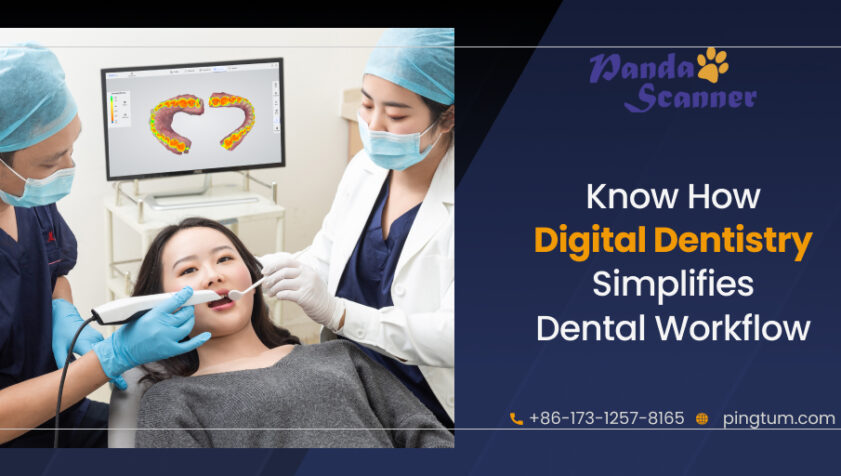Digital dentistry is being embraced by dentists and dental labs faster than it has ever been predicted. New and evolving technologies are offering creative solutions to conventional dental problems. Every dentist wants to offer the best diagnosis and treatment to his or her patients in terms of accuracy, efficiency, and comfort. So, if you are a dentist who is not sure about how digital dentistry can add value to his or her treatment, then here we have shared in proper detail how digital dentistry can uncomplicate the dental workflow.
Take a look at the ways in which digital dentistry can help.

What Is Digital Dentistry?
In simple words, “digital dentistry” describes the utilization of dental devices or technologies, which implies the incorporation of computer-aided components to execute dental procedures. These are used in place of the manual equipment that is used in traditional dentistry. Now, at present, there are various digital dental devices and technologies available. These technological devices are all capable of offering various benefits and are commonly built to offer fast-paced, accurate treatments in a comfortable manner. Now, let’s check out how some of the popular dental technologies make it easier for dentists and technicians to offer precise dental treatment, and solutions easily.
Intraoral Scanners
Intraoral scanners are small, hand-held devices that help dentists obtain digital impressions of the intraoral cavity very quickly and accurately. The light source from the scanner is projected onto the treatment area, which takes a perfect impression of the treatment area, and thereafter, a virtual 3D model of the patient’s buccal cavity is processed by the scanning software and displayed in real-time on the side monitor. The intraoral scanner helps dentists obtain accurate details about both the hard and soft tissues of the patient’s mouth. And, helps to craft perfect restoration faster.
Computer-aided Design and Manufacturing
CAD/CAM is one of the most popular and useful technologies in the world of dentistry. The technology supports computer-aided design and manufacturing of dental restorations. Also, it enables dental technicians to create dental restorations faster, easier, and more precisely. Further, CAD/CAM technologies help dentists obtain perfect scan results of the patient’s intraoral cavity. Thereafter, the obtained scanned images can be sent virtually to the laboratory, where the restorations are designed with the help of software, and the details are sent to a milling machine that is used to create the restoration.
CAD/CAM Restorations and Intraoral Scanning Advantages
Choosing CAD/CAM technologies and intraoral scanning for dental treatments offers many benefits. Let’s take a look at these points to understand how such devices add value to the dental workflow.
- The virtual transfer of the files helps reduce the risk of errors because the digital file can be easily revised and reviewed before the actual design and milling are created.
- The intraoral scanners allow to capture and obtain flawless scanned intraoral cavity images, in comparison to traditional dentistry
- The easy-to-operate intraoral scanners allow dentists to perform their work more efficiently and offer complete control over the treatment.
- Since dental restorations such as veneers, bridges, and clear aligners are created using CAD and CAM devices after intra-oral scanning, the dental workflow becomes simpler for the dental technicians.
Conclusion
So, this is how CAD/CAM technology and intraoral scanners have helped to transform dentistry and have allowed dentists and lab technicians to offer perfect solutions that were not possible earlier. From scanning to manufacturing, everything has become super smooth, and most importantly, the procedures can be performed in one go. Thus, these two technologies of digital dentistry are much more cost-effective and time-saving, and by eliminating several steps that are performed manually, they have minimized the complexities in the process, and so today dentistry can be performed easily, unlike the case with traditional dentistry. So, if you have not yet embraced the boons of digital dentistry, you can understand how you may lack the chances of achieving the goals that you have set for yourself in your profession.






